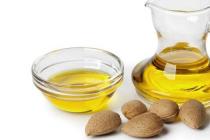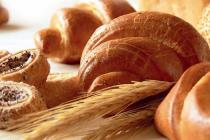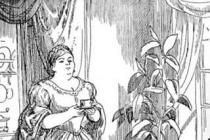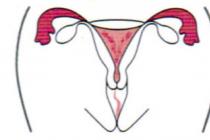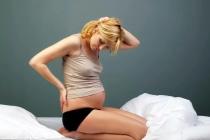This weight loss technique, with the right approach, not only helps to quickly get rid of a significant part of extra pounds, but also remove harmful substances from the body. The Japanese diet allows the use of exclusively low-calorie foods, due to which their own fat stores begin to burn. Protein food in the diet of a person who is losing weight helps to improve metabolism, which also has a good effect on the figure and well-being of a person.
What is the Japanese diet for 14 days
The nutrition system is considered unbalanced, since its menu lacks some trace elements useful for the body. The Japanese diet for 14 days helps to lose up to 9-10 kg. The essence of the technique is the use of products, the energy value of which is minimal. With their help, the body is not fully saturated, therefore, it begins to expend previously accumulated fats.
To achieve the promised result, you need to eat strictly on schedule and in limited quantities. The Japanese diet provides for a daily diet. At the end of the diet, it is important to follow some recommendations in order to maintain the result for a long time. The main principles of this method of losing weight are as follows:
- refusal of spices, salt;
- the predominance of protein foods in the menu;
- the use of exclusively dietary dishes;
- maintaining a balanced diet in the future.
Advantages and disadvantages
Like any other weight loss system, the Japanese diet has its pros and cons. They must be taken into account before starting to observe such a diet. If the method causes you serious discomfort, it is better to find an alternative way to get rid of extra pounds. The main benefits of the Japanese diet are:
- normalization of metabolic and metabolic processes;
- removal of toxins, excess fluid, toxins from the body;
- high efficiency;
- short duration;
- good tolerance (the most difficult - the first 3 days, after which the body gets used to the diet).
The disadvantages of the method are standard and are no different from the disadvantages of other low-calorie diets. These include:
- possible depletion of the body, if additional vitamin complexes are not taken;
- the minimum number of calories, which increases the likelihood of breaking loose in the first few days of the diet;
- obligatory use of brewed coffee, which is not allowed for everyone.
Rules
The Japanese weight loss system gives an amazing result, but in order to achieve the effect, it is important to strictly follow all the rules. It's easy to remember them:
- You can eat only what is indicated on the menu, in addition, it is important to strictly observe the portion size. It is forbidden even to change products in places, because during weight loss certain changes occur in the metabolism, and the Japanese diet is designed to maintain the proper functioning of the body.
- It is necessary to observe the correct drinking regimen. The daily norm for an adult is 1.5 liters of non-carbonated clean water at room temperature.
- Required to take vitamins for 2 weeks. Ignoring this requirement will lead to beriberi, deterioration of well-being, loss of strength, and a decrease in immunity.
- Active physical activity is prohibited. At the same time, morning exercises are recommended, which helps to cheer up and keep muscles in good shape.
- Any snacks are excluded. 3 meals per day are allowed. With a strong feeling of hunger, it is allowed to drink a glass of low-fat kefir.
Approved Products
This method of losing weight is considered tough and is based on the use of predominantly protein foods with the exclusion of carbohydrates and fats from the menu. It is allowed to drink only plain water and natural black coffee. The products that make up the slimming menu are:
- fish (any);
- hard cheese;
- eggs;
- chicken fillet, beef;
- low-fat kefir;
- raw vegetables, fruits.
Prohibited Products
- flour products, pastries;
- alcohol;
- bananas and grapes;
- sweets;
- tea, cocoa, milk;
- all seasonings, including sugar, salt;
- smoked products.

Japanese diet menu for 14 days
A strict weight loss system does not allow any changes in the diet and schedule. If you want to get the promised result, it is important to strictly follow the schedule that the Japanese diet offers for two weeks. Optimal menu:
|
Black brewed coffee without sugar |
A glass of tomato juice, a couple of hard-boiled eggs, boiled cabbage with vegetable oil |
Boiled meat or fish (200 g) |
|
|
Unsweetened coffee, a slice of rye bread |
Boiled or grilled fish, boiled cabbage with vegetable oil |
A glass of low-fat kefir, 100 g of boiled beef |
|
|
A slice of rye bread (you can cracker or toast), unsweetened coffee |
Eggplant or zucchini fried in a little olive oil |
Unsalted, boiled beef (200 g), fresh white cabbage with vegetable oil, 2 hard boiled eggs |
|
|
Fresh carrots seasoned with lemon juice |
A glass of tomato juice, 200 g grilled or steamed trout |
200 g any fresh fruit |
|
|
Grated carrot salad (can be sprinkled with lemon juice) |
Boiled or baked fish (200 g), a glass of tomato juice |
200 g of fruit (you can apples, citrus fruits, etc.) |
|
|
unsweetened coffee |
Dietary chicken meat (200 g), carrot and cabbage salad with vegetable oil |
Fresh carrots, 2 boiled eggs |
|
|
Coffee brew without sugar |
Boiled unsalted beef (500 g) |
200 g beef stew or 200 g fresh fruit |
|
|
unsweetened coffee |
Unsalted boiled chicken (500 g), carrot and cabbage salad with vegetable oil |
2 boiled eggs, fresh carrot |
|
|
Grated carrots with lemon juice |
Fried or boiled fish (carp), a glass of tomato juice |
Any fruit (200 g) |
|
|
unsweetened coffee |
Hard cheese (50 g), 2-3 small carrots, boiled egg |
Any fruit (200 g) |
|
|
Slice of black bread, coffee without sugar |
Eggplant/zucchini fried in olive oil |
Fresh beef, 2 boiled eggs, fresh cabbage with vegetable oil |
|
|
Unsweetened coffee, a slice of rye bread |
200 g fried or boiled fish with fresh cabbage in vegetable oil |
A glass of kefir, 100 g of boiled unsalted beef |
|
|
Sugar free coffee |
Boiled cabbage in vegetable oil, 2 hard boiled eggs, a glass of tomato juice |
Fried or boiled fish (200 g) |
|
|
unsweetened coffee |
Fried / boiled fish (200 g), fresh cabbage salad, which can be seasoned with olive oil |
A glass of kefir, 200 g of boiled beef |
Leaving the Japanese Diet
Diet, menu, drinking regime - everything in this technique is designed for rapid weight loss. At the same time, in order to maintain health in the pursuit of a beautiful figure, it is important that the 14-day diet ends correctly. Lost kilograms will not come back if you correctly exit the Japanese food system. For this you should:
- daily add no more than 1 product to the diet;
- try not to increase the volume of servings sharply;
- in the next 2-3 weeks after the completion of the diet, refuse fatty, sour, spicy, smoked foods.

Dish recipes
The most high-calorie product that allows you to include in the menu of the Japanese diet for weight loss are eggs. Protein, in addition, losing weight is obtained from meat and dairy products. A small amount of carbohydrates is consumed along with crackers, vegetables, fruits and dark bread, and the body receives fats from vegetable oil. It is better to give preference to olive, using it for dressing vegetable salads or cooking other dishes.
Turkey boiled meatballs
- Time: 50 minutes.
- Calorie content of the dish: 130 kcal / 100 g.
- Destination: lunch / dinner.
- Cuisine: Russian.
- Difficulty: easy.
Since the menu of the Japanese diet for 14 days is scarce and monotonous, the chicken can be periodically replaced with a turkey. For this, the fillet part of the bird, freed from bones and skins, is suitable. You can combine turkey meatballs with fresh vegetables or salads. It is important to refuse salt, pepper and any flavorings in the form of spices during cooking - they are prohibited during weight loss.
Ingredients:
- onion;
- turkey - 200 g;
- small carrot.
Cooking method:
- Boil the meat, pass it along with the onion through a meat grinder.
- Add grated carrots to minced meat.
- Roll into small balls with wet hands.
- Fill a saucepan with water, put on fire and wait until it boils.
- Boil the meatballs until tender (this will take 20-30 minutes). Serve the finished dish with chopped dill, parsley.

Boiled beef patties
- Time: 60 minutes.
- Number of servings: for 1 person.
- Calorie content of the dish: 152 kcal / 100 g.
- Destination: lunch / dinner.
- Cuisine: Russian.
- Difficulty: easy.
The Japanese diet involves the use of exclusively lean meats, which include beef. Many do not like boiled meat because of its rigidity, so it is better to cook minced beef fillet. Subsequently, it will serve as the basis for the preparation of delicious and satisfying diet meatballs. Rice for the dish is better to choose unpolished - it has more nutrients and no starch.
Ingredients:
- beef without fat - 200 g;
- small bulb;
- carrots - 70 g;
- egg white - 1 pc.;
- unpolished rice - 50 g.
Cooking method:
- Grind vegetables and meat with a blender or meat grinder.
- Boil rice until half cooked.
- Stir in egg white and rice.
- Roll the balls from the resulting mass.
- Put them in a deep frying pan and fill with boiled hot water so that only the tops of the balls remain above its surface.
- Bring liquid to a boil and reduce heat to medium.
- It takes half an hour to stew meatballs suitable for the Japanese diet. You can eat them with the remaining broth and fresh vegetables.

Trout in the oven
- Time: 40 minutes.
- Number of servings: for 1 person.
- Calorie content of the dish: 105.6 kcal / 100 g.
- Destination: lunch / dinner.
- Cuisine: Russian.
- Difficulty: easy.
Trout is a fish of the salmon family, which is famous for its excellent taste and rich composition of nutrients. The baked product is a great example of a healthy protein food that is perfect for the Japanese 14 day diet. Trout contains omega-3 fatty acids, vitamins E and D, zinc, selenium, magnesium, while it has a minimum amount of calories. To bake fish, preserving its aroma, it is better to use foil.
Ingredients:
- a couple of slices of lemon;
- small fresh trout;
- dill, parsley.
Cooking method:
- Wash, clean the fish from the insides. Pat it dry with a tissue.
- Squeeze the juice from the lemon over the trout, put the remaining slices on top.
- Put green sprigs of dill, parsley in the abdomen.
- Send the baking sheet with the fish to the oven preheated to 190 degrees. In this case, the trout should be covered with foil - this will help preserve the juice.
- After half an hour, you can serve the fish on the table.

Cauliflower puree with tomatoes
- Time: 20 minutes.
- Number of servings: for 1 person.
- Calorie content of the dish: 33 kcal / 100 g.
- Destination: lunch / dinner.
- Cuisine: Russian.
- Difficulty: easy.
As part of the Japanese diet, you have to constantly eat boiled white cabbage, which quickly gets boring. You can replace it in the menu with mashed cauliflower. The dish is prepared very quickly and simply, while it contains a minimum of calories. Thanks to such food in the diet, you can quickly get rid of excess weight and feel great, because cauliflower and tomatoes are a storehouse of vitamins and minerals.
Ingredients:
- cauliflower - 300 g;
- dill;
- tomato - 1 pc.;
- boiled eggs - 1-2 pcs.
Cooking method:
- Boil the cabbage, chop with a blender.
- Put the mass on a plate, garnish with chopped dill, tomato slices.
- Serve a diet dish with boiled eggs.

Contraindications
The principle of the Japanese diet, which ensures its effectiveness, is the acceleration of the metabolism in the body. At the same time, the weight loss system has nothing to do with the dishes of the Land of the Rising Sun. The diet is designed for healthy people and those who have certain chronic pathologies. However, the Japanese technique has some contraindications. It is forbidden to lose weight in this way:
- during pregnancy, lactation;
- people with diseases of the stomach, liver, kidneys, heart, blood vessels);
- diabetics;
- during the endocrine restructuring of the body (with menopause, after an abortion, during treatment with hormonal drugs);
- professional athletes and persons who have intense physical activity.
Video
Among the many existing diets for weight loss, the Japanese occupies a special place. She gave rise to many myths, disputes and rumors. Why the diet was called Japanese has remained a mystery. The products that make up its basis have little in common with the traditional Japanese diet, which is based on seafood, rice, fish and soy. Moreover, the Japanese prefer to consume most of the food without heat treatment, which is not always suitable for a Russian person. But let's leave aside the history of the name of the diet and talk about its effectiveness.
The essence of the Japanese diet
It is one of the low-calorie unbalanced diets. It is also called saltless. It is this circumstance (lack of salt) that makes it very effective. Is it possible to rebuild the body in just 13 days? The experience of losing weight and reviews of nutritionists say that this is quite real.
The balance in the diet is shifting towards fats, reducing the amount of complex carbohydrates and calories to a minimum. Fats can effectively cleanse the body, relieving constipation. There is nothing unusual in the set of products - these are vegetables, fruits, fish and meat. A feature is the inclusion in the diet of black coffee, which, as a rule, belongs to prohibited foods.
The Japanese diet is effective in cases where weight gain is associated with metabolic disorders. By normalizing metabolic processes and cleansing the body, it gives a lasting result.
Those who endured two weeks of a strict regimen and correctly left the diet lose an average of 7 to 10 kg.
Doctors' opinion
Nutritionists say that proper weight loss is careful weight loss. During the Japanese diet, doctors urge you to carefully listen to your feelings and not force the body if it starts to protest against such a diet. An unbalanced diet requires taking a complex of vitamins, which are best agreed with the doctor. Doctors warn that weakness and fatigue that persists for 3-4 days after the start of the diet are a signal to get out of it.
In general, nutritionists do not see any threats to healthy people. On the contrary, they consider such a diet to be useful precisely from the point of view of the rejection of harmful foods and the intensive restructuring of metabolic processes. They noted the importance of the correct exit from the diet, as a guarantee of maintaining the result.
Doctors warn that you can return to the Japanese diet for 13 days no earlier than six months later.
Pitfalls of the Japanese Diet
Before entering the Japanese diet, you should study all its nuances. And they are as follows:
In addition to pitfalls, the Japanese woman also has a number of contraindications.
Contraindications
Considering that most vegetables should not be cooked, the Japanese diet is contraindicated for those who have diseases of the gastrointestinal tract:
You can not use the Japanese diet for pregnant and lactating mothers. It is not suitable for those who have an individual intolerance to foods included in the diet. For people with diabetes, especially type 1, this diet is also contraindicated due to the lack of complex carbohydrates.
Diet Features
The principle of the Japanese woman is strict observance of the regime. You can’t swap days, you can’t increase or decrease portions, or replace products.
You need to eat them only in the form and in the order prescribed by the diet. This is important for restoring normal metabolism.
Drinking regime - at least 1.5 - 2 liters of pure water or green tea per day. Herbal teas are allowed. Only those products that cannot be eaten in another form are subjected to heat treatment - fish, meat, eggs. The diet requires a complete rejection of salt.
Among the prohibited foods are those that have a high glycemic index:
Table: Japanese salt-free diet menu for 13 days
| days | Breakfast | Dinner | Dinner |
| 1 day | Natural unsweetened coffee | 2 hard-boiled eggs, boiled cabbage salad dressed with sunflower oil, 1 glass of tomato juice | 200 g boiled fish without salt |
| 2 day | 200 g boiled fish, boiled cabbage salad dressed with vegetable oil | ||
| 3 day | Natural unsweetened coffee, 1 slice of toasted bread | 2 hard-boiled eggs, 200 g boiled beef without salt; raw cabbage salad with sunflower oil | |
| Day 4 | 200 g boiled fish, 1 glass of tomato juice | 200 g of any fruit | |
| Day 5 | 1 medium raw carrot, freshly squeezed juice of one lemon | 200 g of any fruit | |
| Day 6 | |||
| Day 7 | Green tea | 200 g boiled beef without salt | 200 g of any fruit |
| Day 8 | Natural unsweetened coffee without bread and toast | 500 g unsalted boiled chicken, fresh cabbage and carrot salad with vegetable oil. | 2 hard-boiled eggs, 1 medium fresh carrot with vegetable oil |
| Day 9 | 1 medium raw carrot, freshly squeezed juice of one lemon | Fried or boiled fish, 1 glass of tomato juice | 200 g of any fruit |
| Day 10 | Natural unsweetened coffee without bread and toast | 1 hard-boiled egg, 3 medium fresh carrots with vegetable oil, 50 g of hard cheese. | 200 g of any fruit |
| Day 11 | Natural unsweetened coffee, 1 slice of toasted rye bread | 1 large zucchini or eggplant, fried in vegetable oil. Serving size is unlimited | 2 hard-boiled eggs, 200 g boiled beef without salt, fresh cabbage salad with vegetable oil |
| day 12 | Natural unsweetened coffee, 1 slice of toasted rye bread | 200 g boiled fish, fresh cabbage vegetable salad with vegetable oil | 100 g boiled beef without salt, 1 glass of kefir |
| day 13 | Natural unsweetened coffee without bread and toast | 2 hard-boiled eggs, boiled cabbage salad with sunflower oil, 1 glass of tomato juice. | 200 g boiled fish |
This kind of Japanese woman is not the only one. There are several options for it.
Varieties of the Japanese diet
Despite the difference in the menu and in the approach to organizing the diet, the basis for all types of Japanese diet is the same. The same products are banned.
Diet for 7 days
One of the diet options involves the use of traditional Japanese products. Its feature is the application of the principle of separate power supply. In the composition - rice, legumes, seafood, vegetables and fruits. The menu looks like this:
The diet can be extended up to 13 days. To do this, repeat the six-day cycle. The fourteenth day is similar to the seventh day - this is the beginning of the exit from the diet. Portion size throughout the diet is not limited. Calories and carbohydrates are not counted. It is necessary to strictly observe the sequence of days and drink plenty of fluids, preferably green tea.
You can practice the diet only once a year.
Japanese rice diet
This variety is less strict than the previous two. It is based on a radical cleansing with rice. Nutritionists call it a "brush" for the body. Preparation for the diet should begin 5 days before it starts. That is how long it will take to soak the first portion of rice. If you weigh more than 65 kg, you will need 3 tablespoons of regular (not steamed) rice. They must be poured into 100 ml of clean water and left in the refrigerator for 5 days. So every day you need to soak the next portion of cereals (four in total). It is better to number the containers so as not to confuse them later. Rice should be washed every day and the water changed.
On the first day of the diet on an empty stomach, washed rice from glass No. 1 is eaten. The next meal should be no earlier than 2 to 3 hours later. You can't drink either. A new portion of rice is poured into the empty glass and again infused for 5 days.
Meals for 13 days should not include fatty, fried, smoked, salty and sweet foods. Otherwise, there are no hard restrictions. Rice eaten on an empty stomach will cleanse the intestines of perennial deposits and fecal stones, remove pathogenic microflora and provide a favorable environment for the development of beneficial bacteria. It is most convenient to carry out a rice diet during fasting. You can practice it 3-4 times a year.
The diet is contraindicated for those who lack calcium in the body, during pregnancy and lactation and with erectile dysfunction.
Getting out of the diet
A smooth exit from the diet should take at least two weeks. The advantage of a Japanese woman is that within 13 days the body gets used to healthy food, and there is almost no desire to return to former favorite, but harmful foods. In addition, during this time the volume of the stomach decreases, and it is impossible to load it immediately with a large amount of food. Carbohydrates should be introduced gradually and in small portions. Nutritionists warn that 1-2 kg can return in the first days. But this is normal and should not be viewed as a disaster.
Video: Nutritionist Andrey Nikiforov about the Japanese diet
The Japanese diet has a controversial history. According to one hypothesis, it was invented by Japanese women in pursuit of ideal weight, according to another, the Japanese diet is a product developed by an elite weight loss clinic located in Japan. One way or another, more than one thousand women were convinced of the effectiveness of this method of losing weight, and now it's your turn.
The principle of the Japanese diet is the strict observance of all the rules and the impossibility of making changes to the menu. But first things first. The Japanese diet requires a little preparation, so you should not eat up before starting it, arranging a farewell to gluttony. On the eve of the first day of the diet, you should mentally tune in to a positive result, imagine yourself as a fresh, rejuvenated woman who has lost a few kilograms. The day before the start of the diet, you should limit yourself to a light dinner and slightly reduce salt intake. So you gradually accustom the body to the next 13 days of life without salt at all.
For dinner, boil a small plate of rice and complement dinner with a light vegetable salad. Instead of salt, you can season salad and rice with a few drops of vinegar and a little pepper. Chinese chopsticks, which everyone who has ever visited a sushi bar can control, will be useful to you in the difficult struggle for a wasp waist. Try to eat all the next 13 days of the diet with chopsticks, and the result will exceed your expectations.
There are not so many restrictions in the Japanese diet, but they require strict adherence. This is how the required change in metabolism in your body is achieved, which will help not only to lose a few kilograms, but also to consolidate the result.
List of Foods Not to Eat on the Japanese Diet

Salt.
As you know, salt retains excess fluid in the body, which provokes not only excess weight, but also such unpleasant things as cellulite and swelling in the morning.
Sugar.
It is the abuse of sugar that leads to the formation of "ears" and "barrels" on our waist, back and hips.
Alcohol.
The Japanese diet requires a complete rejection of alcoholic beverages, whether it be a glass of table wine or even a bottle of beer. Alcohol negatively affects metabolism, nullifying all the work of the body during the Japanese diet. Bread. During the Japanese diet, buns and other starchy pleasures from premium flour should be abandoned.
In order to help the body quickly rebuild the metabolism and remove accumulated toxins, you should drink at least 1.5 liters of table mineral water per day.
Japanese diet - contraindications
It is worth noting that it is strictly forbidden for lactating women and pregnant women to carry out any diets, including the Japanese one, because during breastfeeding and during pregnancy, your baby will suffer first of all about the lack of the required amount of fats, proteins and carbohydrates, and in case Pregnancy diet can even provoke a threatened miscarriage. Therefore, be patient and postpone the diet for the future. In addition, the Japanese diet does not exclude the use of vitamin complexes. So your hair, nails and skin will not experience a shortage of certain substances, the amount of which may decrease during the diet.
Japanese Diet Menu
Immediately after waking up, you need to drink a glass of non-carbonated mineral water.
Breakfast:
soft-boiled eggs (2 pcs), green tea (2 cups), yogurt (250 ml) or low-fat cottage cheese (200 g), vitamin C (50 mg). From about the 10th day, you can eat one fruit instead of vitamin C tablets.
Two hours before lunch: a glass of water, fish (200 gr). Then another 200 grams of fish combined with boiled vegetables. Rounding out the menu is one or two raw vegetables.
Dinner:
non-carbonated water (1-2 glasses) before meals. Low-fat fish baked in foil or boiled in water (250 grams). As a side dish, you can use green salad, bell peppers, zucchini, cucumbers, broccoli, Brussels sprouts, beans. All these vegetables must be consumed without oil, and can be seasoned with low-fat yogurt. The Japanese diet excludes the use of water or tea within 2 hours after dinner.
Dinner:
Glass of water. Dinner is identical to lunch, the only difference is a more varied set of vegetables.
Before going to bed, you should drink a glass of tea for weight loss. Here is his recipe. Elder root - 20 gr., Cornflower flowers - 10 gr., Horsetail - 20 gr., Strawberry leaves - 10 gr., Birch leaves - 100 gr., Cuff - 10 gr. All these ingredients are brewed in a proportion of 1 tbsp. spoon for a cup of boiling water. Boil for 2 minutes, then insist 15 minutes.
Sample Japanese diet menu for a week
1st day
Breakfast: a cup of black coffee.
Lunch: 2 boiled eggs, fresh cabbage salad with vegetable oil, a glass of tomato juice or 1 fresh tomato.
2nd day
Breakfast: a cup of black coffee, cracker.
Lunch: a portion of fried or boiled fish, fresh cabbage salad with vegetable oil.
Dinner: 200 g of boiled beef, a glass of yogurt.
3rd day
Breakfast: a cup of black coffee.
Lunch: 1 raw egg, 3 large boiled carrots with vegetable oil.
Dinner: apples.
4th day
Breakfast: a cup of black coffee.
Lunch: large parsnip or parsley root fried in vegetable oil, apples.
Dinner: 2 boiled eggs, 200 g of boiled beef, fresh cabbage salad with vegetable oil.
5th day
Breakfast: raw grated carrots seasoned with lemon juice.
Lunch: 500 g of fried or boiled fish, a glass of tomato juice.
Dinner: a portion of fried or boiled fish, fresh cabbage salad with vegetable oil.
6th day
Breakfast: a cup of black coffee.
Lunch: 500 g boiled chicken, raw carrot or fresh cabbage salad.
Dinner: 2 boiled eggs, raw carrot salad with vegetable oil.
7th day
Breakfast: a glass of tea.
Lunch: 200 g of boiled beef, fruit.
Dinner: to choose from the diet of the previous days (except the third day).
Then the diet should be repeated starting from the menu of the 3rd day.
The fact that people in Japan do not suffer from obesity is due to a special way of eating, on the basis of which nutritionists have compiled a menu called the "Japanese diet". It is based on the use of low-calorie foods - fats and carbohydrates. The Japanese diet is considered one of the most effective, its effectiveness is a loss of up to 8 kg in just two weeks.
The most effective Japanese diet for weight loss
An effective diet was developed by nutritionists from the Jaex Clinic. With strict observance of it for two weeks, a complete restructuring of metabolism occurs, which persists for at least another two years. The Japanese diet for weight loss is completely unrelated to eating traditional Japanese food, it includes foods such as:
- fish;
- meat;
- vegetables;
- eggs;
- fruits;
- crackers.
Japanese diet Yaelo
This Japanese diet was developed by the nutritionists of the Yaelo Clinic, which is why it got its name. For those who practice such nutrition, sugar, flour products and alcohol are strictly prohibited. It is necessary to drink plenty of plain or mineral water between meals, salt is also undesirable, because it retains water in the body. Japanese diet menu, which consists of:
1 day:
- in the morning a glass of coffee without sugar is allowed;
- lunch includes a salad of boiled cabbage with butter, a glass of tomato juice and two hard-boiled eggs without salt;
- dinner consists of no more than 200 g.
2 day:
- in the morning traditional coffee with a small cracker;
- lunch includes a variety of fish and fresh cabbage salad with a little butter;
- for dinner - boiled beef in the amount of 200 g and a glass of kefir.
3 day:
- already familiar coffee with crackers;
- lunch consists of stewed vegetables - 1 zucchini or eggplant in oil;
- for dinner, you can enjoy 200 g of boiled beef, two hard-boiled eggs and drizzled with butter.
Day 4:
- breakfast consists of a cup of black coffee;
- lunch includes 3 large boiled carrots, one raw egg (just wash it very carefully) and 15 g of cottage cheese or unsalted cheese;
- for dinner, some fruit is allowed no more than 240 g.
Day 5:
- for breakfast we do without coffee, replacing it with a salad of raw carrots sprinkled with lemon juice;
- for lunch it allows you to eat big fish in any form and a glass of tomato juice;
- for dinner, a little sweet fruit, no more than 240 g.
Day 6:
- breakfast consists of coffee;
- for lunch, you can eat 500 g of boiled chicken and cabbage and carrot salad sprinkled with oil;
- dinner consists of 2 boiled eggs and buttered carrot salad.
Day 7:
- for breakfast you can drink tea without sugar;
- lunch consists of 200 g of boiled beef;
- dinner can be any of those offered earlier, with the exception of dinner on the third day.
- on days 8-14, repeat from the sixth day to the first.

Japanese salt-free diet
This Japanese diet for 7 days completely repeats the week of the above diet, its feature is the complete absence of salt. A weekly diet will normalize and allow you to develop the right eating habits. The absence of salt in the diet for a week brings many benefits to the body:
- Helps to get rid of excess weight.
- Rejuvenates the body.
- Removes toxins.
- Eliminates internal edema.
But it is worthwhile to understand that salt-free nutrition is categorically contraindicated:
- pregnant and lactating;
- those who have hard physical work;
- those who have diseased liver, kidneys and heart.
Japanese protein diet
For those who have been struggling with excess weight for many years, such a protein and salt-free diet can be a real salvation. Unlike analogues, such a diet per day is at least 200 g of vegetables and 250-450 g of proteins with the complete absence of sugar and other carbohydrates. Therefore, for those who want to lose weight, the Japanese diet can be of great help.

Japanese water diet
Almost all Japanese know this miraculous diet:
- Every day on an empty stomach, before brushing your teeth, you need to drink 3 glasses of warm water (necessarily warm, this is very important).
- Do not eat or drink anything for 45 minutes.
- As always, have breakfast.
- The next meal is not earlier than in 2 hours.
The Japanese water diet helps to cure such serious diseases:
- constipation - 10 days;
- gastritis - 10 days;
- hypertension - a period of 1 month;
- stomach ulcer - 1 month;
- diabetes - 1 month;
- tuberculosis - 3 months;
- psoriasis - 6 months;
- cancer - 6 months.
But in order to be healthy all the time, many Japanese have been starting their day with warm water for years. It is not forbidden to add a little citric acid to the water for taste. For many people, drinking three glasses at a time can be difficult, so doctors advise starting with one glass and gradually increasing the amount of water you drink.
Japanese banana diet
This is probably the easiest and most delicious way to lose weight. All that needs to be done is to replace the traditional breakfast with a few bananas. The strict Japanese diet provides for the exclusion of dairy, sweet and fatty foods from the diet. Coffee and tea are not welcome, the only drink allowed is water. How does this diet work? Bananas increase metabolism, banana starch saturates the body and does not want to eat for a long time.
Japanese rice diet
Such a diet is another effective one. The whole point of the diet is that the morning begins with the intake of half-baked rice soaked for at least 5 days. After such a “breakfast”, it is forbidden to eat for at least 3 hours. This real Japanese diet helps to lose at least 5 kilograms in two weeks. What do we have to do:
- Take 5 glasses of water, put 2 tablespoons of unboiled rice there (those who weigh more than 65 kg need 3 tablespoons).
- Every day you need to change the water in the glasses.
- As soon as 5 days have passed, you need to take rice from the first glass and eat it instead of breakfast.
- In the empty glass you need to add 2 tablespoons of rice and put it last.
- Thus, you get 5 glasses of rice that have been soaked in water for 5 days. Rice soaked in water is a “brush” that will collect and remove all toxins from the body. Internal swelling and excess salt will leave your body forever.

Japanese tea diet
This new Japanese diet involves drinking lots of Japanese green tea, as well as:
- 200 g per day of meat or fish;
- stewed or fresh vegetables;
- tea-cooked cereals in small quantities;
- no more than 150 g of cottage cheese per day;
- no more than 2 eggs for dinner;
- dinner consisting of 250 g of fruit.
The meaning of such a diet is that at least 1.5 liters of green tea stimulates digestion, removes toxins and excess fluid from the body. During the cleansing course, it is forbidden to drink anything other than tea and clean water. The restriction is also imposed on sweet, flour products, pastries, salt. For those who endure at least two weeks of such nutrition, nutritionists promise a loss of at least 3 kg per week.
How to get out of the Japanese diet?
It does not matter how many days you have followed the Japanese diet - a week or two, the main thing is to get out of it correctly. The exit from the Japanese diet provides for further exclusion from the diet of sweets and starchy foods. It is equally important not to overeat in the evening before going to bed. This regimen will allow you to consolidate the excellent result of the diet for many years.
If you suffer from extra pounds, then such a diet will help move the weight loss off the ground. How does the Japanese diet work? Since her diet consists of proteins, the processing of which requires more energy than is supplied to the body, we begin to spend more calories than we receive. The absence of salt prevents water from accumulating in the tissues and removes hidden edema. Due to this, everything is getting rid of extra 5-8 kilograms.

